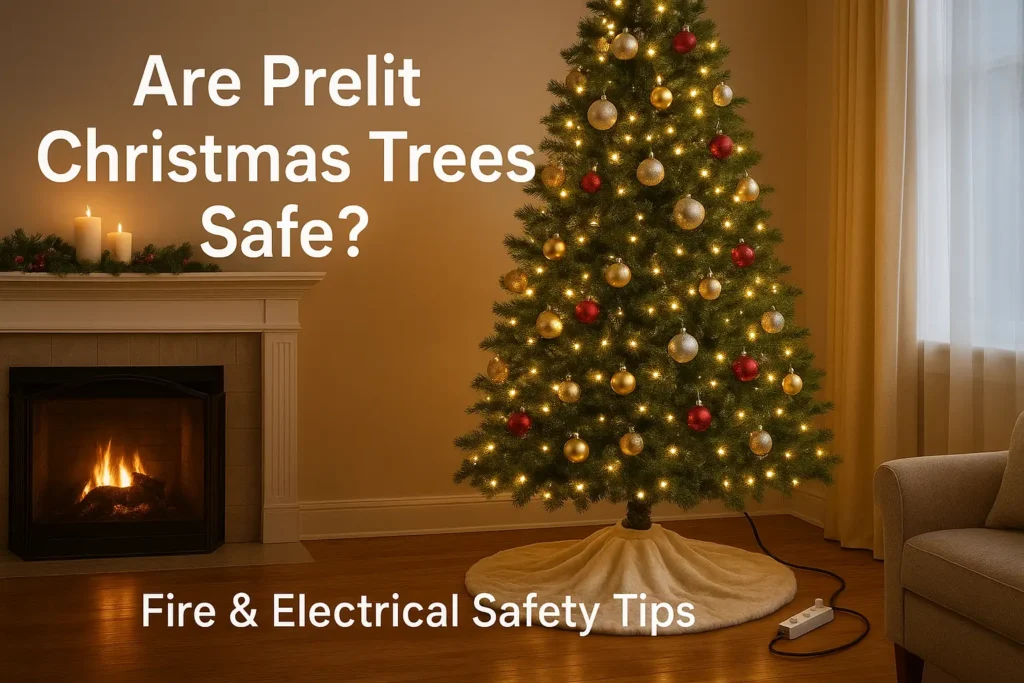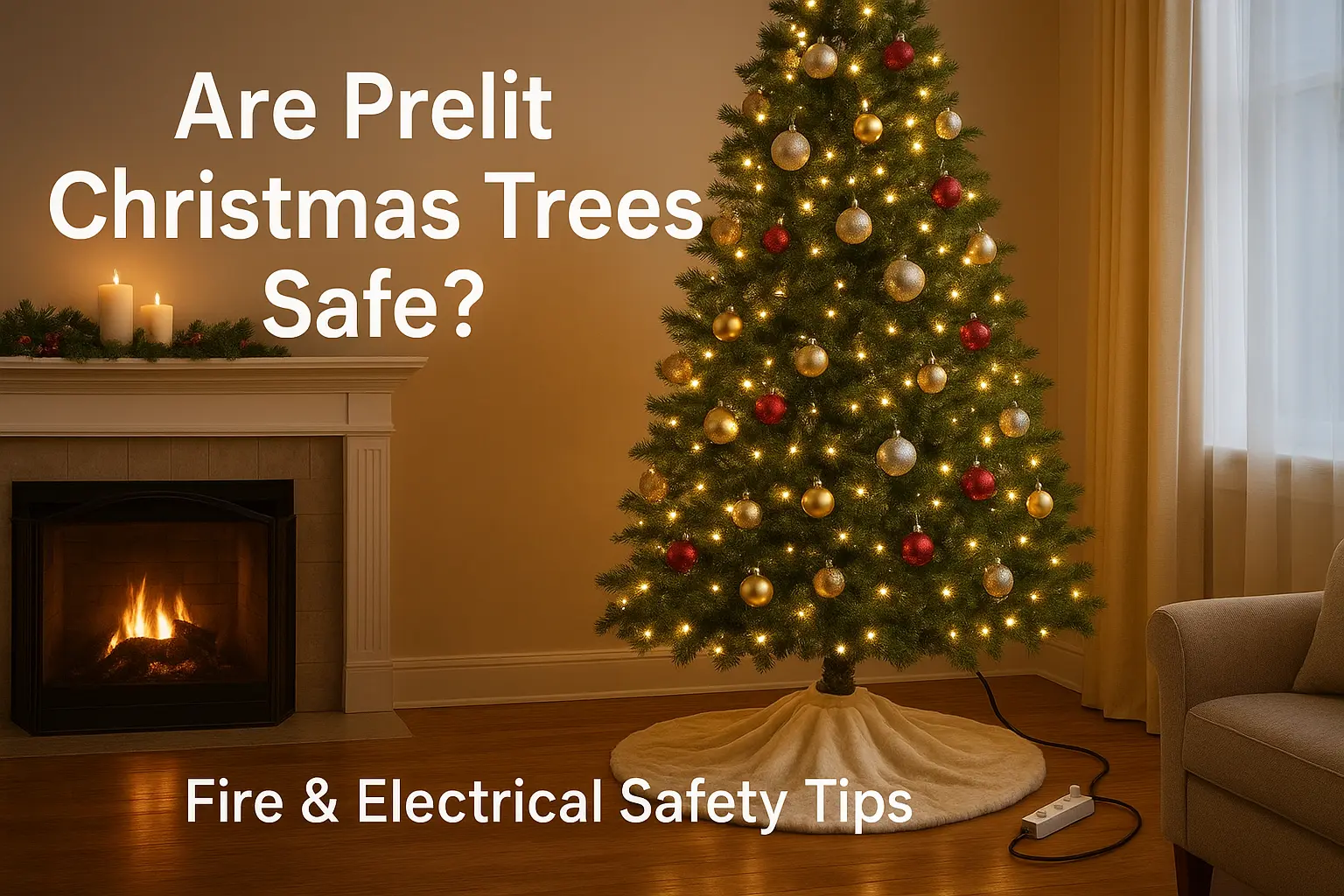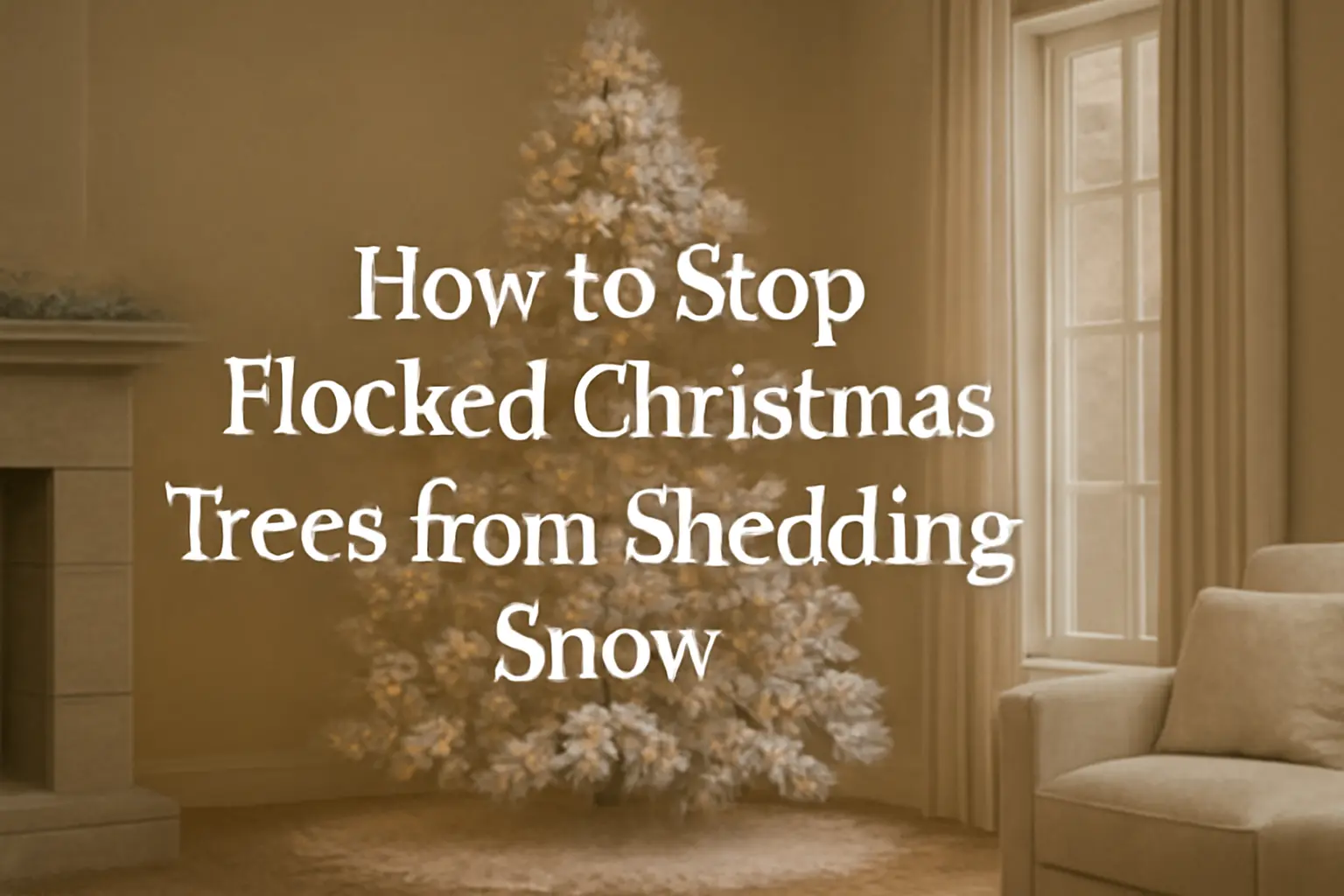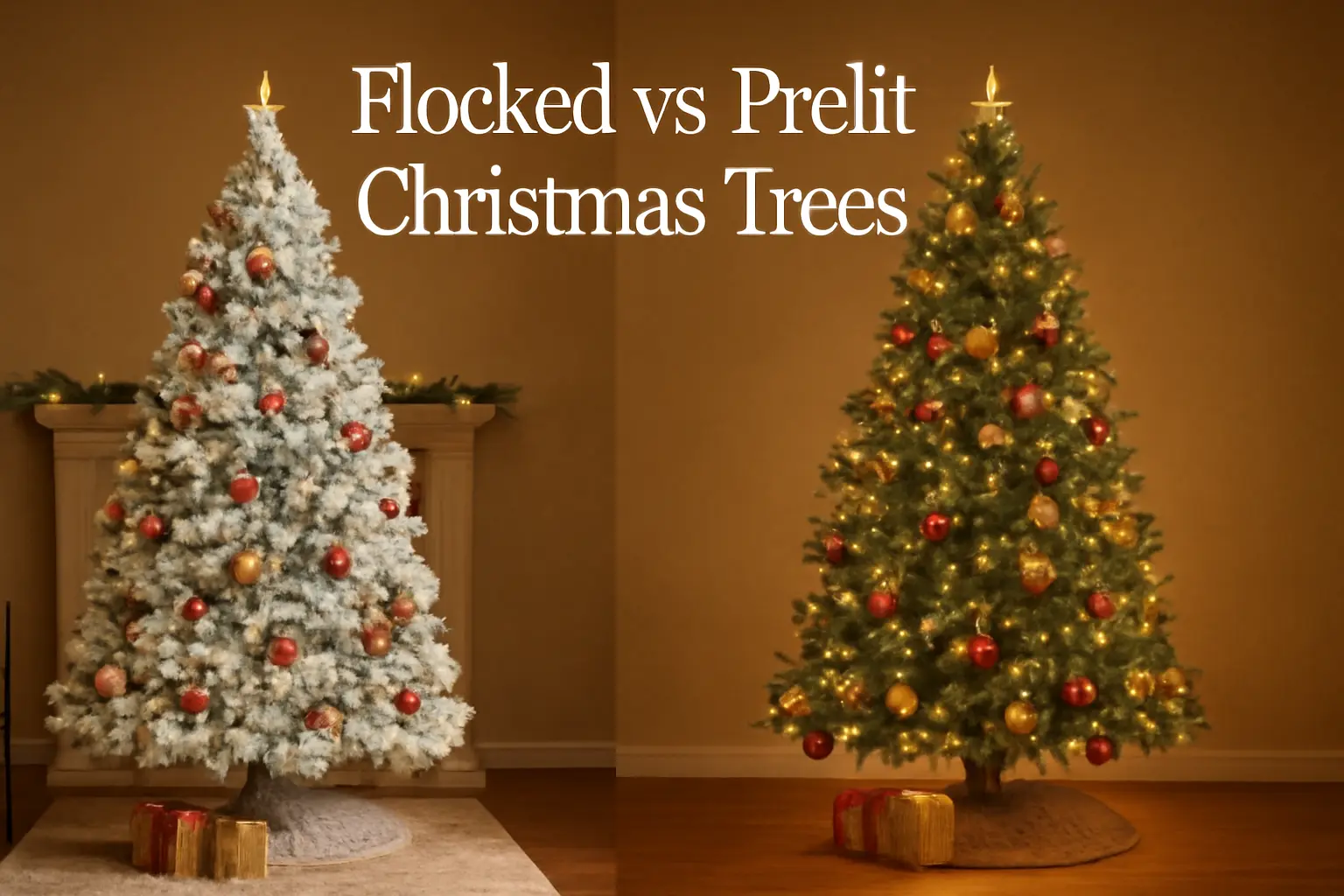When the holiday season arrives, one of the first things families look forward to is putting up their Christmas tree. In many homes, the tree is not just a decoration but the heart of holiday traditions, where children open presents, families gather for photos, and seasonal memories are made. Over the last decade, prelit Christmas trees have gained immense popularity because they save time, look professionally decorated, and eliminate the stress of untangling and hanging separate strings of lights. But as convenient as they are, one important question keeps surfacing: Are prelit Christmas trees safe?
Concerns about fire hazards, electrical issues, overheating bulbs, and overall indoor safety are valid. Holiday decorations, according to fire safety organizations, are a leading contributor to house fires during December. This makes it essential for homeowners to understand how prelit trees are built, what risks they carry, and how to use them responsibly. In this detailed guide, we will cover every aspect of prelit Christmas tree safety—from fire resistance and electrical concerns to childproofing, pet safety, and maintenance—so you can enjoy the beauty of your tree without unnecessary risks.
Understanding What a Prelit Christmas Tree Is
Before diving into safety concerns, it’s important to understand what exactly a prelit Christmas tree is. Unlike traditional artificial trees, which require you to buy separate lights and decorate manually, prelit trees come with built-in lighting systems. These lights are factory-installed, often threaded neatly through branches so the tree looks evenly illuminated without the hassle of stringing wires yourself.
There are generally two types of lighting used in prelit trees:
-
Incandescent bulbs – These are traditional mini lights, usually cheaper but known for generating heat and burning out faster.
-
LED bulbs – These are energy-efficient, stay cool to the touch, and last significantly longer than incandescent bulbs.
Prelit trees are often marketed as safer because the lights are installed by manufacturers using standardized methods rather than by homeowners improvising. The wiring tends to be hidden, protected, and less likely to fray. However, while this design reduces some risks, no electrical product is entirely risk-free. Even prelit trees require careful selection, setup, and maintenance.
The Fire Risks of Prelit Christmas Trees
One of the biggest concerns people have with prelit Christmas trees is the potential for fire hazards. Every year, fire departments report thousands of incidents linked to holiday decorations. While natural Christmas trees pose the highest risk when they dry out, artificial prelit trees also come with their own set of dangers.
Fire risks typically fall into three categories:
-
Electrical fire risks – Faulty wiring, loose sockets, or overloading outlets can cause sparks or overheating.
-
Heat-related risks – Incandescent bulbs generate enough heat that, if left on for hours or in contact with flammable materials, they can contribute to fire hazards.
-
Material hazards – Lower-quality artificial trees may be made from non-fire-retardant materials that ignite more easily if exposed to sparks or heat.
For example, if a tree with incandescent lights is placed too close to a heater, or if extension cords are overloaded, the chances of a fire increase dramatically. Conversely, LED prelit trees made with flame-resistant PVC or PE are much safer. This is why safety-conscious families should pay close attention to the type of tree they purchase.
Electrical Safety Concerns with Prelit Trees
Since prelit Christmas trees are electrical products, their biggest risks lie in wiring and power management. Unlike regular string lights that can be replaced or rearranged, the lighting in prelit trees is fixed into the structure of the tree. If something goes wrong with the wiring, it can affect the entire tree, sometimes requiring replacement of large sections or even the whole product.
Common electrical safety concerns include:
-
Frayed or exposed wires caused by frequent bending of branches or rough storage during the off-season.
-
Cheap manufacturing where wires are thin, sockets are poorly secured, or insulation is substandard.
-
Overloaded power strips when people plug multiple decorations into the same outlet as the tree.
-
Faulty plugs or connectors that loosen over time and cause sparking.
To minimize these risks, consumers should:
-
Always purchase trees with a UL certification, which indicates the product has been tested for safety.
-
Use a surge protector when plugging in a prelit tree to prevent damage from sudden electrical spikes.
-
Inspect the tree each year before use, checking for any broken bulbs, exposed wires, or damaged connectors.
-
Keep the power source easily accessible so the tree can be unplugged quickly in an emergency.
With good electrical habits, prelit trees can be just as safe—if not safer—than manually lit artificial or natural trees.
Are LED Prelit Christmas Trees Safer Than Incandescent?
A major factor in determining safety is the type of lights your tree uses. Incandescent lights and LED lights differ significantly in performance and safety features.
-
Incandescent lights generate heat, consume more electricity, and burn out faster. A single defective bulb can sometimes cause a chain reaction of failures across a section of the tree. If left on for extended periods, they may contribute to overheating.
-
LED lights, on the other hand, use up to 80–90% less energy, produce very little heat, and last much longer (tens of thousands of hours). They are cool to the touch, which makes them much safer around children and pets.
Why LED prelit trees are considered safer:
-
They minimize the chance of heat-related fires.
-
They are less prone to overloading circuits due to lower power consumption.
-
They last longer, which means fewer chances of wiring degradation over time.
-
They are environmentally friendlier, reducing waste from frequent replacements.
If you are buying a prelit Christmas tree with safety as the priority, an LED model is the smartest choice.
Fire-Resistant Materials in Prelit Trees
Another overlooked safety feature of prelit Christmas trees is the material used in their construction. High-quality artificial trees are built with fire-retardant PVC or polyethylene (PE). These materials are treated to resist flames, meaning they won’t easily ignite if exposed to sparks or heat.
When shopping, look for trees that carry labels such as:
-
“Flame Retardant” or “Fire Resistant.”
-
UL or ETL certifications on the lighting components.
-
Customer reviews highlighting build quality and safety.
By contrast, cheaper artificial trees—often imported from unregulated markets—may lack these safety treatments. This can make them much more dangerous if an electrical fault occurs. While no tree is completely fireproof, choosing one made from flame-resistant materials can mean the difference between a minor accident and a devastating house fire.
How to Use a Prelit Tree Safely Indoors
Even the safest tree can become dangerous if it’s not used properly. Indoor placement and daily habits play a big role in preventing accidents.
For example, placing your prelit Christmas tree too close to a fireplace, radiator, or heater can cause heat damage or create fire hazards. Similarly, if cords are left exposed, children or pets may trip, chew, or pull on them.
Here are some key safety practices:
-
Keep the tree at least three feet away from any heat source.
-
Avoid decorating with flammable items like paper garlands or low-hanging candles.
-
Always turn off and unplug the lights when leaving the house or going to bed.
-
Use indoor-rated extension cords designed to handle the wattage of holiday decorations.
By treating your tree with the same precautions you’d give any electrical appliance, you can reduce risks significantly.
Final Thoughts
So, are prelit Christmas trees safe? The answer is yes — as long as they are used properly and purchased from reputable sources. Most modern prelit trees are designed with fire-retardant materials and safe electrical systems, especially those with LED lighting and proper certifications.
The biggest risks come not from the tree itself but from misuse, poor-quality products, or lack of maintenance. By choosing a certified tree, placing it in a safe location, inspecting it regularly, and practicing good electrical safety, you can enjoy the beauty of a glowing Christmas tree without worry





